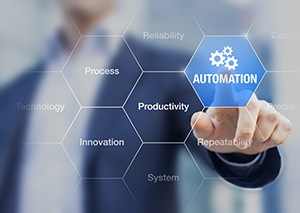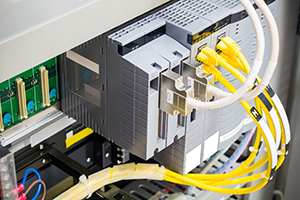According to research from Markets and Markets Custom Research, the MES software market is expected to grow to $18.22 Billion by 2022, a CAGR (Compound Annual Growth Rate) of 13.6% between 2016 and 2022. The report goes on to cite the reasons for the growth: increasing use of industrial automation, increased adoption as the benefits of MES are recognized, importance of regulatory compliance and low deployment costs. Clearly, the manufacturing world is recognizing that MES software is critical to effective manufacturing operations.
Why MES Systems Are Crucial
An effective supply chain is the cornerstone for success in today’s competitive environment, but you can’t effectively orchestrate your supply chain until you have your own house in order. Your inventory records must be accurate—that’s where your ERP system comes in—but your shop floor records must be equally accurate.
Most ERP systems provide rudimentary production scheduling, but they don’t come close to the level of precision necessary for a world class supply chain. APS (Advanced Planning and Scheduling) software provides that precision and timeliness. You need to be able to schedule your own shop floor with the accuracy you expect from your suppliers. That means scheduling jobs for specific days and at specific times, not just by week, day or shift, which is all most ERP systems provide. Even then, ERP systems usually assume infinite capacity, so you can never be certain when an order will reach the top of the queue in a work center unless you take extra steps to adjust your schedules. And in most cases, continuous and operational adjustments are impossible to do manually and require APS optimization logic.
 Worst of all, ERP systems don’t readily connect with machinery and equipment to monitor the process and provide early warnings of problems or process anomalies. ERP systems wait until you notice there’s a problem with an order; an MES system alerts you immediately when it encounters an unusual, unexpected and/or nonconforming floor activity.
Worst of all, ERP systems don’t readily connect with machinery and equipment to monitor the process and provide early warnings of problems or process anomalies. ERP systems wait until you notice there’s a problem with an order; an MES system alerts you immediately when it encounters an unusual, unexpected and/or nonconforming floor activity.
IoT and MES Software
As companies move toward adopting the IoT, they are looking to directly connect their equipment to their MES software. This is exactly where the benefits of MES over ERP become apparent.
MES systems were designed to connect to equipment and capture process data directly in a paperless system. MES shop floor data collection software monitors the process, and notifies management when process parameters approach defined thresholds. This SCADA level connectivity allows companies to react quickly to stop or adjust their process so they don’t create parts that will require rework or that may be scrapped—helping to keep product costs low. They also capture information that can be analyzed to provide the best operating parameters for improved quality and part production in a “historian”.
On the other hand, most ERP systems were designed for manual entry of process quantities at the end of a shift or at changeovers. Even if the ERP system has been modified to accept bar code input—with or without a tablet touch screen operator station, —it still doesn’t approach the capabilities of MES software. ERP can’t monitor process parameters, can’t automatically generate new schedules when priorities change, can’t connect directly to equipment and quite simply can’t handle the data volumes involved in IoT.
Even when ERP systems talk about their automation solutions, they are usually bolt on applications that are little more than bar code data collection systems. They do not fundamentally change the nature of ERP. They do not monitor, control and improve the factory activities required to produce parts in a high quality and high performance manner.
The Paperless Shop Floor
 Progressive manufacturing companies are looking to create a truly paperless shop floor. When a system is designed to be paperless software, you are not required to print routers or other documents to go paperless. Your MES system gets its information directly from your equipment or the source data file for “controlled” document delivery.
Progressive manufacturing companies are looking to create a truly paperless shop floor. When a system is designed to be paperless software, you are not required to print routers or other documents to go paperless. Your MES system gets its information directly from your equipment or the source data file for “controlled” document delivery.
As a result, your shop floor records are more accurate. MES systems capture quantities completed, process parameters and even quality information automatically.
You can be certain that your team is working on the right priorities because the APS schedule automatically adapts to what’s happening in the real world, including changes in demand that are updating the dispatch list on the floor electronically as needed.
You will also save money because you won’t have to print routers, travelers and other shop floor documents. Your team can view production status and their priorities on mobile devices or screens on the shop floor if they need timely information. Unlike with ERP, it’s always accurate and always timely. Paperless software is also good for the environment as well as saving money. If your green initiatives call for reducing the amount of paper you use, MES software will help you do just that, since it is paperless software designed for a paperless shop floor.
Reduced Costs Equals Increased Profits
MES systems reduce costs in many ways. They reduce scrap and rework costs. They reduce obsolete inventory by eliminating needless overruns, and improve inventory accuracy by tracking production processes in real time. They provide error proofing and traceability of the material used on each job. An MES system will increase throughput by reducing downtime and increasing OEE (overall equipment effectiveness). MES software eliminates input errors because it doesn’t rely on manual input, and it will reduce paper use through the paperless software design.
The net result of all this cost savings is an increase in margins and profitability. You may even see an increase in revenue as customers buy more from you when they realize that your delivery information is more accurate than your competitors’—and that you offer consistent quality. MES systems have one of the shortest ROI cycles of any major software solution because they are quick to implement and the benefits go immediately and quickly to the bottom line.
The question shouldn’t be whether you can afford an MES software. The question should be whether you can afford not to have one.
